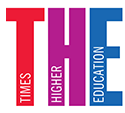The bloc, which grew out of a common market project that ripped down barriers to trade, now dreamed of creating what was later dubbed a “single market for science” to complement the EU’s prized “four freedoms” of capital, people, services and goods.
It envisaged an EU where “people and knowledge can circulate more freely”, the integration of scientists in eastern and western Europe, and for countries to “coordinate” what type of research they funded to avoid policy “overlap”.
For the past two decades, Brussels has tried to push forward this unifying vision – but frustrated by the pace of change, some universities now think it needs a bigger shove.
The ERA remains an “unfinished project”, said Jan Palmowski, secretary general of the Guild of European Research-intensive Universities. Though there has been progress, “the original goals haven’t been accomplished”.
With the ERA a priority of the current research and innovation commissioner, Mariya Gabriel, work is under way in Brussels to hammer out a new smorgasbord of targets to chivvy it along. One aim on the table is for governments to spend 1.25 per cent of gross domestic product on research and development.
But several university associations are exasperated, publicly warning last month that the targets won’t be binding, and feel left out of the process.
“This is not going to work if you want…free circulation of researchers, students and knowledge between member states,” said Kurt Deketelaere, secretary general of the League of European Research Universities. “It’s an illusion to think that you are going to create a fifth freedom without a legislative framework.”
After all, he said, it took binding measures to realise the EU’s cherished economic common market.
Countries still spend vastly different amounts on research, and this is the chief barrier to a full circulation of academics across the bloc, in Professor Palmowski’s view.
In the commission’s most recent report on the ERA, it found that in 2016, Norway’s government spent a full 1 per cent of GDP on research, but Poland just 0.16 per cent.
Although there are exceptions, the big investors are typically wealthy northern and Scandinavian countries, while the laggards tend to be former communist states.
This imbalance means a persistent brain drain to already research-strong countries. “As long as you have vastly different spending on research and innovation, you are going to have concentrations of researchers in places that spend more,” Professor Palmowski said.
Another stumbling block is that researchers looking to move around the EU are still faced with “27 different schemes of labour, tax and research careers”, said Professor Deketelaere, as the continent is still a patchwork of childcare rights, social security systems and career ladders.
Newly created “European universities” – consortia of institutions across the continent trying to integrate their research and strategies – recently reported dozens of headaches resulting from such national barriers.
Still, in some parts of the ERA – which, although focused on the EU, is sometimes defined as including neighbouring countries such as Switzerland, the UK and Norway – it’s now “completely unremarkable” for universities to recruit from other European states, raising no more of an eyebrow than a Texan scientist decamping to California, said Professor Palmowski.
In Switzerland, for example, more than a third of PhD students are from EU states. Israel, Denmark and Austria are also magnets for mobility.
But other systems remain stubbornly national. In Lithuania, Poland, Greece and Romania, fewer than one in 100 doctoral students come from other EU states. Still, there are signs of opening up; since 2007, across the ERA, the proportion of mobile PhD students has been growing by around 4 per cent a year, according to the commission.
“The ERA is a mix of real things and rhetorical ones,” said Giulio Marini, an associate at UCL’s Centre for Higher Education Studies. Probably more important in allowing researchers to cross borders have been the EU’s freedom-of-movement rules – which the UK has now left – and frictionless travel across the Schengen Area. The ERA “is not per se a driver of much change”, he judged.
It can boast notable successes: EU member states now routinely build scientific infrastructure together, with nearly €20 billion (£17.4 billion) spent across 37 projects over the last two decades. Observers also hail big strides in open science and open access to papers.
And as research and innovation have moved “to the centre of the table” for policymakers in Brussels because they are seen as an engine of growth, explained Professor Palmowski, the ERA was seen as ever more crucial.
But 90 per cent of research funding still comes from nation states, cautioned Professor Deketelaere, and there was little sign of national funders pooling their resources to avoid doubling up on projects in different parts of the bloc. “Member states are reluctant to give up power,” he said.

0 Comments